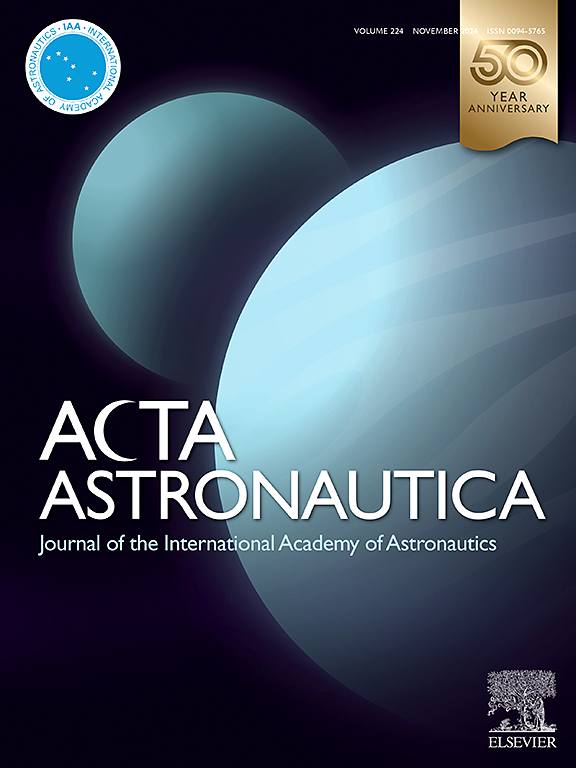Multiple Mars gravity-assist trajectory to inclined Sun–Earth L4
IF 3.1
2区 物理与天体物理
Q1 ENGINEERING, AEROSPACE
引用次数: 0
Abstract
The multiple Mars gravity-assist trajectory is compared to the phasing trajectory for placing a spacecraft in a circular Sun–Earth L4 orbit with a 1 AU semi-major axis and inclinations of 10° and relative to the ecliptic plane. The gravity-assist maneuvers are treated as instantaneous velocity changes using a zero-sphere-of-influence model. The trajectory is optimized for two potential launch vehicles (Falcon 9 and Falcon Heavy) to achieve the desired orbit with minimal energy. Through trajectory analysis based on various launch vehicles and their -based payload capacities, it was found that the multiple Mars gravity-assist trajectories are outperformed by the phasing trajectory at a 10° inclination but are additions to the Pareto optimal solutions for inclination mission when considering the spacecraft’s arrival mass at the Sun–Earth L4.
多重火星重力辅助轨道到倾斜的太阳-地球L4
多重火星重力辅助轨道与将航天器置于圆形太阳-地球L4轨道(半长轴为1天文单位,相对黄道面倾角为10°和14.5°)的分相轨道相比较。利用零影响球模型将重力辅助机动处理为瞬时速度变化。该轨道针对两种潜在运载火箭(猎鹰9号和猎鹰重型)进行了优化,以最小的C3能量实现所需的轨道。通过对各种运载火箭及其基于c3的有效载荷能力的弹道分析,发现多重火星重力辅助轨道的性能优于倾角为10°的分相轨道,但考虑到航天器到达太阳-地球L4的质量,这是对倾角为14.5°任务的帕累托最优解的补充。
本文章由计算机程序翻译,如有差异,请以英文原文为准。
求助全文
约1分钟内获得全文
求助全文
来源期刊

Acta Astronautica
工程技术-工程:宇航
CiteScore
7.20
自引率
22.90%
发文量
599
审稿时长
53 days
期刊介绍:
Acta Astronautica is sponsored by the International Academy of Astronautics. Content is based on original contributions in all fields of basic, engineering, life and social space sciences and of space technology related to:
The peaceful scientific exploration of space,
Its exploitation for human welfare and progress,
Conception, design, development and operation of space-borne and Earth-based systems,
In addition to regular issues, the journal publishes selected proceedings of the annual International Astronautical Congress (IAC), transactions of the IAA and special issues on topics of current interest, such as microgravity, space station technology, geostationary orbits, and space economics. Other subject areas include satellite technology, space transportation and communications, space energy, power and propulsion, astrodynamics, extraterrestrial intelligence and Earth observations.
 求助内容:
求助内容: 应助结果提醒方式:
应助结果提醒方式:


